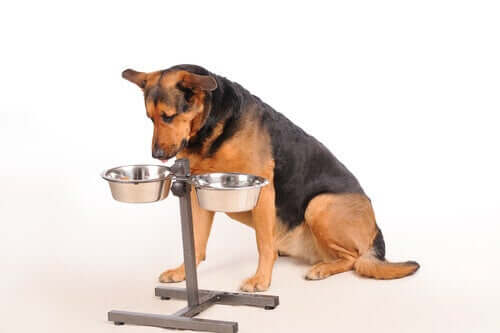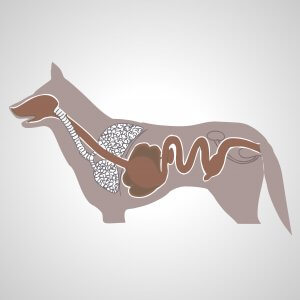The Benefits of Raised Dog Bowls - Fact or Fiction?

You can find so many different pet bowls on the market these days. They can be simple, designer, or specially designed slow-feeders. The material can vary too: glass, wood, metal, plastic, clay, ceramic… But there’s one type we’re beginning to see more and more of: raised dog bowls.
There is huge controversy around which kind of feeder is best for our four-legged friends. At the end of the day, the owner will choose the bowl they believe best suits their pet’s needs.
When faced with this dilemma, many owners opt for raised dog bowls. But is this the best way to feed your pet? Let’s find out!
How dogs eat
Anatomically speaking, a dog’s larynx and esophagus have been designed to work when the dog is looking down at the ground. This is something all dog breeds have in common with their ancestor, the wolf (Canis lupus).
If you think about the way the domestic dog and its wild relatives eat, you’ll notice that when they eat prey that’s lying on the ground, they naturally remain standing, and lower their heads down toward the food.
This allows them to use the powerful muscles in the head and neck to rip off chunks of meat. Plus, by keeping their heads down, the epiglottis remains closed, preventing the food from entering their airway. In fact, when a dog won’t eat and requires a feeding tube, the head must be held downwards when inserting the tube, so that it goes directly into the esophagus.

Are raised bowls good for dogs?
Raised dog bowls aren’t necessarily a bad option. It’s simply a question of getting the right height, so that your dog can eat in a natural position.
If the bowls are too high, the dog won’t eat as it should. This can lead to a number of health problems, such as loss of muscle tone in the head and neck, problems swallowing, choking etc.
What is the best way to feed your dog?
When choosing a bowl for your pet, it’s important to think about their individual needs. What you feed your pet and how you feed it to them can have a huge impact on their behavior, self-esteem and self-control.

Feeding time is the perfect opportunity to develop your dog’s sense of smell and strengthen your bond. To do this, you first need to set the pet bowl to one side, and offer your dog food in such a way that it poses them a real challenge.
Try to encourage your pet to spend at least 40 minutes a day doing “nose work”. There are a number of ways you could do this. For example, take a set of plastic cups and place treats or kibble in each one. Stack them up and let your dog use its nose and paws to get the food.
Another option is to hide food around your home, garden and terrace. Your pet will have to run around searching for pieces of kibble, providing them with mental and physical stimulation. This is the best option for dogs that get over-excited on walks.
All cited sources were thoroughly reviewed by our team to ensure their quality, reliability, currency, and validity. The bibliography of this article was considered reliable and of academic or scientific accuracy.
- Penninck, D. G., Nyland, T. G., Fisher, P. E., & Kerr, L. Y. (1989). Ultrasonography of the normal canine gastrointestinal tract. Veterinary Radiology, 30(6), 272-276.
- Pratschke, K. M., Fitzpatrick, E., Campion, D., McAllister, H., & Bellenger, C. R. (2004). Topography of the gastro-oesophageal junction in the dog revisited: possible clinical implications. Research in veterinary science, 76(3), 171-177.
